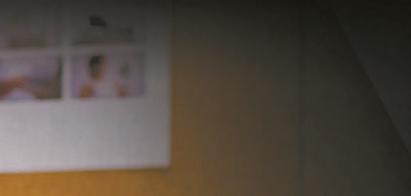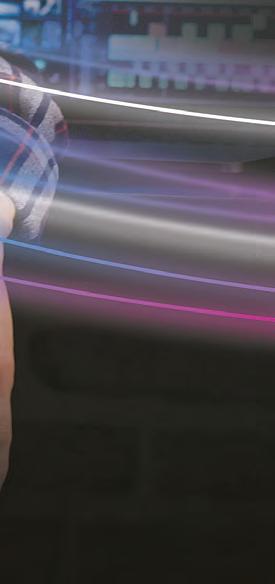

































By Henry Greenstein l l l hgreenstein@ljworld.com
For the second year in a row, the Jayhawks’ struggles during the heart of their conference season caused their seeding to drop enough that they missed out on the chance to play close to home. They won’t be playing in Wichita, where they have never lost in three separate NCAA Tournament trips, or in Denver, a city to which Kansas fans have famously traveled well in years past. Instead, they find themselves in, of all places, Providence, Rhode Island, at Amica Mutual Pavilion.
Even as KU has played in some far-flung locales in the NCAA Tournament over the years, the Jayhawks haven’t made it out to Providence. KU’s Round of 64 matchup will be its first in the Ocean State as a whole, let alone at the home of the Providence Friars.
They rarely go to the East Coast, and they’ve never been seeded this low in Bill Self’s tenure.

KU has not even played NCAA Tournament games east of Greensboro, North Carolina, at any point in its history, or east of Detroit in the Bill Self era.
But, with the preponderance of transfers on the Jayhawks’ roster, it isn’t a surprise that one has experience in the region. Junior wing AJ Storr played on the road at Providence twice, once each for St. John’s and Wisconsin. Regional site
If KU can escape the first weekend for just the second time since 2018, it will have the chance to play a Sweet 16 game in San Francisco at the Chase Center, home of the Golden State Warriors.
> SEED, 9AA


Nick Krug/Journal-World Photos ABOVE: KANSAS GUARD ZEKE MAYO (5) TAKES A QUESTION FROM REPORTERS ALONGSIDE CENTER HUNTER DICKINSON during a press conference on Sunday at Allen Fieldhouse following the NCAA Tournament selection show. LEFT: HEAD COACH BILL SELF talks about the Jayhawks’ seeding.
By David Rodish l l l drodish@ljworld.com
Kansas, the No. 7 seed in the West Regional, will begin the NCAA Tournament with No. 10 Arkansas (2013) on Thursday. The game is set for 6:10 p.m. Central Time in Providence, Rhode Island, and will be televised on CBS. This won’t be the first time these teams have seen each other this season, but it’s the first one that counts. KU traveled to Fayetteville, Arkansas, for an exhibition game that didn’t include numerous KU contributors — including Hunter Dickinson and Rylan Griffen — on Oct. 25. Arkansas won 85-69. Arkansas is in its first season under former
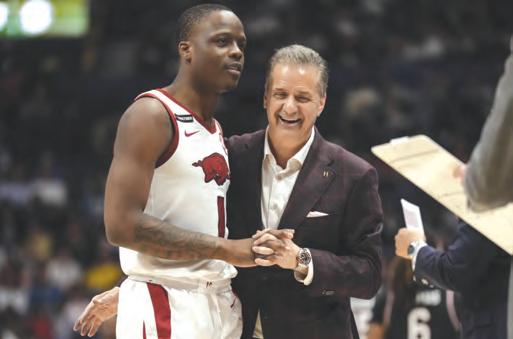
When Calipari arrived, he overhauled the Razorbacks’ roster. He brought in three transfers he coached at Kentucky and three freshmen who had committed to him at Kentucky.
Arkansas has had an upand-down season, which led to a No. 9 seed in the SEC tournament. The Razorbacks lost to Ole Miss 83-80 in the second round after beating South Carolina 72-68 in the first.
Kentucky
coach John Calipari after five years under current USC coach Eric Musselman. According to KenPom.com, the
Razorbacks are 40th in net rating. They have the 20th-best defensive rating but the 73rd-best offensive rating.
Four Razorbacks enter the Big Dance scoring in double digits. Junior forward Adou Thiero led the team with 15.6 points per game and 6.0 rebounds while starting 26 games. Thiero, one of the Kentucky transfers, more than doubled his 7.2 points per game as a sophomore. Sophomore guard
D.J. Wagner averaged 11.1 points per game with 3.5 assists while playing the most minutes on the team. Senior guard Johnell Davis averaged 11.2 points per game. He transferred to Arkansas after four years at Florida Atlantic. Freshman guard Boogie Fland averaged 15.1 points per game and a team-high 5.7 assists before a hand injury on Jan. 11 prevented him from playing. Arkansas announced on Saturday that Fland would begin practicing and likely will make his return in the NCAA Tournament. He shot 36.5% from 3 in his 18 games, which is third on the team, and scored 22 points with six steals in the exhibition game against KU.
> ARKANSAS, 9AA




By Henry Greenstein l l l hgreenstein@ljworld.com
o fan base feels more dread upon receiving a preseason No. 1 ranking from the Associated Press than Kansas’.
For plenty of teams, the consensus of the AP’s pool of writers that they are the class of college basketball before any games have been played means little. At best it can even be a harbinger of good fortune. According to a recent article published by the NCAA, since the tournament expanded to 64 teams with the 198485 season, 18 preseason No. 1 teams have reached the Final Four, with 14 making the title game and six of them winning it.
offseason transfer acquisitions that have panned out to inconsistent degrees, will look to buck that trend.
(If you’re wondering which rankings are lucky for the Jayhawks, Nos. 3 and 4 should provide cause for optimism in future years. The 2021-22 national title team and its 2019-20 predecessor, which was No. 1 entering the Big 12 tournament before the COVID-19 pandemic canceled the season, both began the year at No. 3. The 2007-08 title team and 201718 now-vacated Final Four team, one of the Jayhawks’ most talented in recent years, started at No. 4. One outlier: the 2011-12 national runners-up were a mere 13th at the start of their campaign.)
Bad precedent

None of the KU teams to receive that top early ranking — all of which have come during the Bill Self era — has been anywhere near as fortunate. In fact, the majority have undertaken some of Self’s worst seasons by wins and losses, and none of them has made it out of the first weekend of the tournament come March as several have suffered some of the most ignominious losses in recent program history.
This year’s squad, which earned the No. 1 spot largely on the strength of
The first KU team to receive the title of preseason No. 1 was the 2004-05 team, Self’s second with the Jayhawks. For a while that group, led by seniors Keith Langford and Wayne Simien, lived up to billing as it won 20 of its first 21 games, including victories over top-10 foes in Georgia Tech and Kentucky. The Jayhawks then proceeded to lose six of their final nine games, including, as a No. 3 seed in the tournament, a stunning 64-63 upset against Bucknell in Oklahoma City as Simien’s last-second shot hit the front of the rim.
> PRECEDENT, 9AA




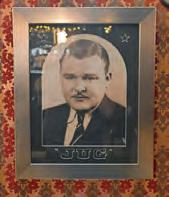


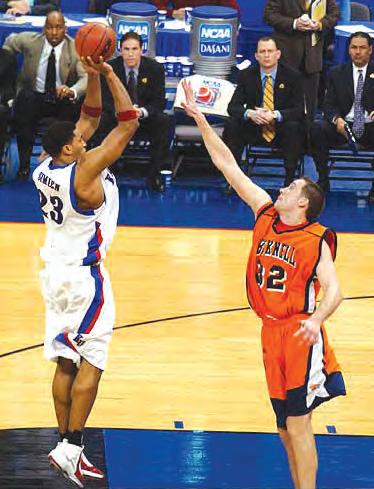

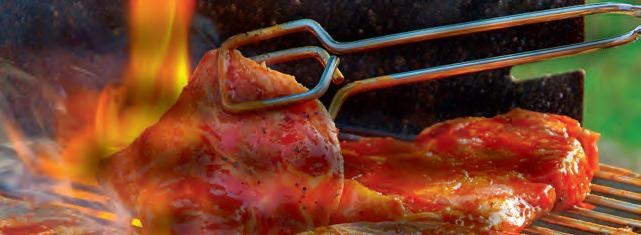

















By Henry Greenstein l l l hgreenstein@ljworld.com




he chants that rained down from the Allen Fieldhouse bleachers on Feb. 3 had a bit of a hallucinatory quality — what with the early stage of the game at which they began, their borderline adversarial nature toward the Kansas players currently on the court, the unlikeliness that the rotational player for whom they were cheering had become such a fan favorite so early in his career.
... he’s really not tall — 6-7, 6-7 and a half — but he’s a terrific, freakish type (of) athlete that can change directions, that can jump, that can put pressure on the rim.”
— Head coach Bill Self
But there they were, three minutes into KU’s home battle with thenNo. 8 Iowa State: “Flo-ry! Flo-ry!” and soon enough “We want Flory! We want Flory!”
“That’s love,” teammate AJ Storr said after the game, which 37 minutes of game time later turned into one of the Jayhawks’ best wins of the season. “That’s definitely love.” How did the love get so intense? How did the KU fan base get to a point where it was cheering for its freshman to take the floor — at the expense of a longtime crowd-pleaser in senior KJ Adams, who had battled through emotional adversity and grown up for four years in Lawrence, and who just two days prior to the chants said in a radio interview he felt he had passed the torch of fanfavorite status to Bidunga?


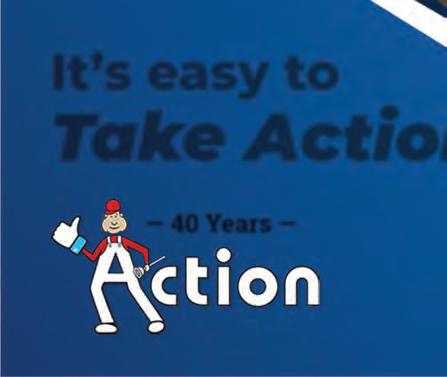








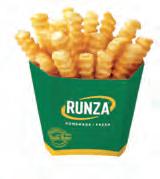


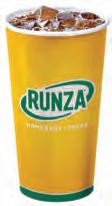


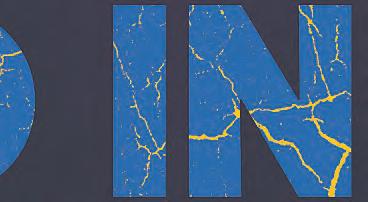



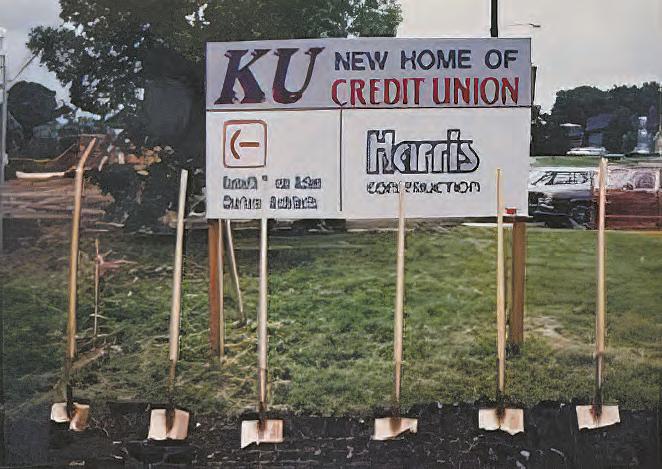











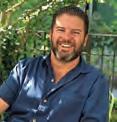































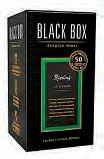





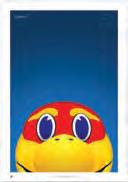
















































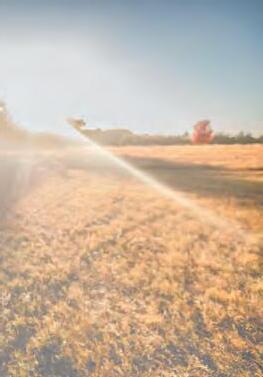














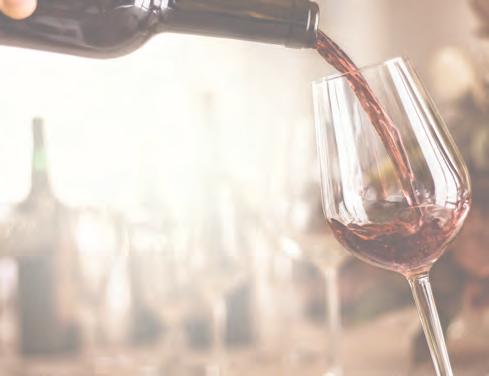












































































































By Henry Greenstein
l l l hgreenstein@ljworld.com
The standard Bill Self has set during his time as head coach at Kansas is such that even the least successful teams of his tenure have a shot, albeit in some cases a rather distant one, to contend for the national title.
This year’s team is still the same set of Jayhawks that earned a preseason No. 1 ranking, that beat a couple of nationally prominent teams in November, that revitalized its season on a pair of occasions after low points in conference play. At the same time, this KU team has looked as vulnerable to shocking losses as any Self has fielded. The combination of calamitous collapses against Houston and Baylor and underwhelming (to put it lightly) showings on the road at places like Kansas State, Utah and BYU got the Jayhawks to their uncharacteristically low seed line entering the tournament.
Here’s a more robust set of reasons why KU could or could not go all the way this year.
Why it could win
l Relatively healthy: Reserve big man Zach Clemence seems poised for a medical redshirt as he has not played since Dec. 14, and guard Shakeel Moore, once the key to the Jayhawks’ January surge, has not played since Feb. 18 after reinjuring his broken foot from the offseason, though KU could still get him back. In general, though, the Jayhawks enter the postseason in a vastly better position than they did last season, when Kevin McCullar Jr. was dealing with a knee bruise
(and got shut down altogether) and Hunter Dickinson returned off a dislocated shoulder.
l Extremely experienced: The Jayhawks’ eight-man rotation consists of a sixth-year senior (Dajuan Harris Jr.), a fifthyear senior (Hunter Dickinson), three true seniors (KJ Adams, David Coit and Zeke Mayo), two juniors (Rylan Griffen and AJ Storr) and a lone freshman (Flory Bidunga), a level of veteran wisdom that compares favorably to many of the teams that qualified for this year’s tournament.
It’s not just that they’ve been around a long time, either — Harris and Adams won a title at KU three years ago, Dickinson went to two tournaments at Michigan (including on a No. 1 seed as a freshman), Mayo helped South Dakota State to two of its seven all-time tournament appearances, Griffen made the 2024 Final Four and so on.
l Not yet at its ceiling: This is a difficult comparison to make for a player of his caliber, but Storr still could accomplish plenty more for the Jayhawks than he has so far, much like Nick Timberlake last season. Timberlake, who at one point during the 2023-24 campaign went scoreless in four out of five games while shooting 2-for-13 from the field, ended up posting a season-high 19 to help KU escape Samford in the first round last year. Storr scored in double digits just once between Jan. 5 and the end of the regular season and is shooting the worst percentages of his career after averaging 16.8 points per game and earning secondteam All-Big Ten honors as a sophomore. The incremental improvement of freshman center Flory Bidunga also provides a potential means for the Jayhawks to become better than they were at any point during the regular season.




l Plays up to good competition: At times this year it has been difficult to reconcile the fact that KU once beat Duke with some of the losses it suffered in conference play, like at home to West Virginia or by 34 points to BYU. But these Jayhawks do get up for big games. They took down Michigan State in Atlanta and the Blue Devils in Las Vegas and trounced then-top 10 Iowa State in Lawrence; they outplayed Big 12 champion Houston at Allen Fieldhouse much of the night, too, before a catastrophic finish, and kept it close with the Cougars a second time on the road.
Why it could not
l Key players are worse away from home: With the caveat that KU has been demonstrably worse on the road throughout the last two seasons, some of the splits this year are rather jarring. Mayo, a Lawrence native, is the most prominent example. By the end of the regular season he was shooting 47.4% overall and 45.5% from deep in home games compared to 38.6% and 30.0% in neutral or road games. He also got to the line about a third as often. That amounted to a dropoff of more than eight points per game. His backcourt mate Harris, meanwhile, scored about the same but shoots 37.7% and 23.8% compared to 50.4% and 39.4% in Allen Fieldhouse.
l Not a streaky team: Winning the NCAA Tournament requires a team to bring everything together for a magical sixgame run. The Jayhawks haven’t had a stretch where they looked consistently good for that long since they were playing midmajors in November. In fact, they strictly alternated wins and losses for a stretch of four weeks from January into February before the rock-bottom
Utah road trip and then the “new season” late-February uptick.
l Inexplicably unable to get to the free-throw line: As much as KU’s three-point shooting has been a frequent topic of conversation, the Jayhawks have shown they can score in bunches from beyond the arc when at least two of Coit, Griffen and Mayo have their A-game. The real concern for them is another avenue of scoring that seems to have been closed off to the Jayhawks altogether: free-throw shooting. For much of 2025 KU has ranked in the mid-300s — out of 355 teams — in free-throw attempts per game. Dickinson has actually gotten to the line more frequently than he did in his first year in Lawrence, albeit still less than he did at Michigan, but no KU guard has consistently been able to draw fouls driving into the paint. That doesn’t just limit scoring but also reduces opportunities to put opposing big men in foul trouble.
l Plays down to poor competition: A frequent topic of discussion in midweek and postgame press conferences this season has been KU’s lack of consistent energy, particularly early in games. That was on full display when the Jayhawks fell behind in the opening minutes at Utah, which has since fired its coach, and didn’t lead for even a second on the way to a disastrous 74-67 loss to the Utes. KU has also lost at home to West Virginia when the Mountaineers were missing two key players, blown a schoolrecord 21-point lead to the worst and most depleted Baylor team in years and gotten in a dogfight at home with UCF that came down to the final minute. In short, it hasn’t taken care of lesser opponents in the way Self’s teams usually have, and that could be a concern in the early rounds of the tournament.














That will be a new experience for the Jayhawks, as KU has not played a game in the city by the Bay since losing to the University of San Francisco 75-58 on Dec. 21, 1963. (The Jayhawks won in two earlier meetings with the Dons there in 1947 and 1960.) That was Dick Harp’s final year as head coach and the
CONTINUED FROM
game took place at War Memorial Gymnasium, now known formally as the Sobrato Center. The East and South Bay have been more frequent destinations for KU over the years. The Jayhawks are 4-2 against Cal in six games played between Oakland and Berkeley, three of which occurred on consecutive days in 1929, and 2-1 against Stanford in Palo Alto. KU also beat Santa Clara 76-64 on the road to open the 199697 season.
The Razorbacks finished their nonconference season 11-2, losing to thenNo. 8 Baylor and Illinois. However, their season quickly turned negative once conference season started, and the Razorbacks lost their first five games and six of their first seven.
CONTINUED FROM PAGE 3AA
The 2004-05 Jayhawks don’t have the worst result ever for a preseason No. 1 team — that would be 2022-23 North Carolina, which after losing to KU in the title game the previous year missed the tournament altogether — but no preseason No. 1 team has suffered a first-round exit since. That would have been good news for the Jayhawks of the prior two decades, except that all
FROM PAGE 4AA
It had a lot to do with some of the inconceivable losses KU suffered in conference play.
In fact, the team would sink far lower in the weeks following that Feb. 3 victory, lower even than after the double-overtime home loss to Houston and 21-point blown lead on the road at Baylor that had helped inspire the chants for Bidunga.
But it had a lot more to do with Bidunga himself, his electrifying shotblocking and lob-catching ability, and particularly the immense growth he had shown when playing alongside fifth-year senior center Hunter Dickinson, the man he was expected to back up all season.
The season has been defined by peaks and plateaus — precious few valleys — for the 6-foot-9 Congolese freshman with a 7-foot-2 wingspan, and a protracted series of undistinguished performances late in conference play took some of the luster off his campaign. He’s looked overmatched in the post against big veteran forwards at times, not even necessarily the most talented ones, and especially overwhelmed when he has to put the ball on the floor instead of finishing a lob or throwing in a quick turnaround hook shot. But he has rarely if ever looked out of place on a team composed primarily of fourthand fifth-year seniors.
How it began Long before KU coach Bill Self was applying superlative after well-deserved superlative to next year’s freshman guard Darryn Peterson, a recently projected top pick in the 2026 NBA Draft, Self had used some only slightly more measured praise to describe Bidunga. In a preseason interview with the Field of 68, he called Bidunga “the best prospect we’ve had here without question since Josh (Jackson)” in the class of 2016.
Bidunga grew up playing soccer in Kinshasa, the Democratic Republic of the Congo, before moving to, of all places, Kokomo, Indiana, to play basketball, where he
The Jayhawks have made one notable trip to the Bay Area during Self’s tenure as head coach. In 2007, KU made it to the West Regional with double-digit victories over Niagara and Kentucky in Chicago, earning a date with Southern Illinois, a No. 4 seed in the midst of one of its best seasons in school history, in San Jose. The Jayhawks survived the Salukis despite numerous turnovers, poor free-throw shooting and the lack of a three-point offense, but fell short against UCLA in the
February was a little kinder to the Razorbacks. They went 5-3 with ranked wins over Kentucky and Mizzou and beat LSU once and Texas twice. The Razorbacks ended the regular season with back-to-back wins over Vanderbilt and Mississippi State, which helped land their spot in the tournament. Calipari had little conviction about his team’s chances of making the tournament
three pertinent KU teams in that period lost in the second round. (And by the way, the only other preseason No. 1 team to do so in the same time period is 2016-17 Duke.)
Much like its predecessor, the 2009-10 team, with Sherron Collins, Cole Aldrich and Xavier Henry, met expectations for a while; in fact, its final win percentage of .917 is the third-highest mark for a single season in Self’s career. It could have been higher if the No. 1 overall seed had made it past Ali Farokhmanesh and Northern Iowa (also in
quickly rose to become a consensus top player at his position and a McDonald’s All-American.
“Flory is an elite athlete,” Self said in a press release when he signed. “He can play above the rim. He changes ends as well as anybody. He’s getting stronger and developing more offensive skill. He is probably as good a prospect that we’ve had inside in quite some time.”
The elephant in the room for KU was the continued presence of the secondteam All-American center Dickinson. It never looked likely Dickinson would depart after his first season in Lawrence, but the prospect of him teaming up with Bidunga wasn’t set in stone until he officially announced his return to the Jayhawks on April 26, saying about a month later of Bidunga that he planned to “try to teach him everything I know, try to help him out in any way I can, and try to make sure he maximizes his potential.”
Figuring out how to pair the two left Self with a bit of a quandary, as he outlined at an offseason event in Topeka in June.
“We got to figure out who he is and how he impacts us and what he can do to help,” Self said of Bidunga. “Because he’s really not tall — 6-7, 6-7 and a half — but he’s a terrific, freakish type (of) athlete that can change directions, that can jump, that can put pressure on the rim. He can do a lot of things. But can he play with Hunter, or how does it work?”
Rise of the two-big lineup
The early conclusion — somewhat surprisingly in retrospect — was that he could not, at least not often. Self said prior to KU’s exhibition game against Washburn that the most likely occasion for the two to play together would be in a zone defense, which of course is quite rare for the Jayhawks. (KU briefly threw out a zone in Manhattan on Feb. 8 this year and that was about it.)
“Let’s get good at being who we are and then maybe branch off after that,” Self said, “as opposed to trying to figure out ways to kind of tinker right now.”
The time to tinker arrived a bit earlier than perhaps anyone including Self expected. Bidunga showed
Elite Eight, depriving Self of his first Final Four berth.
Seeding For the first time in Self’s tenure, KU is a No. 7 seed. That is the lowest the Jayhawks have ranked entering the tournament since 2000, when they entered as a No. 8 seed, scraped past DePaul in overtime and then lost to top-seeded Duke in the second round. KU has only been a No. 7 seed on one other occasion in its history, and it was before the tournament
expanded to 64 teams in 1985. The 1980-81 Jayhawks, in reaching the Sweet 16, made it the farthest of any team in Ted Owens’ final nine seasons at the helm. They did it by getting hot late in the season, shaking off a 3-5 stretch in the heart of the conference season to win seven games in a row, including three to take the Big Eight tournament title and secure a postseason berth, and then a second-round upset over No. 2 seed Arizona State in Wichita, 88-71. Tony Guy
scored 36 points on 13-for15 shooting to outpace Byron Scott’s 32, and the Jayhawks shot 53.2% as a team in the offensive outburst. Their downfall came at the hands of Wichita State in the following round in New Orleans. Mike Jones scored twice in the last minute, including once with four seconds remaining, and the referees famously did not call a foul on the Shockers’ Jay Jackson when he collided with Darnell Valentine in the final moments, resulting in a 66-65 victory for WSU.
in his postgame press conference after the team’s second-round loss in the SEC tournament, but the Razorbacks made it in with 13 other SEC teams, which set an NCAA record for a conference. The Razorbacks finished sixth of 16 teams in the SEC in points allowed at 71.2 per game. They had the fewest blocks per game in the conference and were 10th in steals. Offensively, they were either middling or placed in the bottom third of the conference in most major statistics. They had one of the lowest quantities of fouls per game in the conference but ranked among the worst in the conference in opponent free throws allowed. The Jayhawks enter the tournament with a 21-12 record as the No. 7 seed for the first time since 1981. A win for KU would mean a match with either No. 2 St. John’s or No. 15 Omaha.
Oklahoma City). The Jayhawks, who trailed by 12 midway through the second half, managed to use full-court pressure to get their deficit down to one point at 63-62 in the final minute before Farokhmanesh’s right-wing dagger 3 in transition against the press did KU in.
In recent years, the KU teams who started at No. 1 have had far worse regular-season results. That trend began with the 2018-19 season, as a team depleted by Udoka Azubuike’s season-ending injury and Lagerald Vick’s leave of absence ended up starting four freshmen
promise from the beginning with six points and three boards in his very first shift on the court as a Jayhawk and ended the season opener against Howard with 13 points on a perfect 6-for-6 shooting, but KU unlocked something new with its freshman eight days later in the Champions Classic against Michigan State. With Adams nursing an ankle injury and the Spartans throwing out two big men, Self made the choice to go to Bidunga and Dickinson at the same time, a lineup KU had only practiced “for 20 minutes one day.”
Dickinson, who demolished the Spartans for 28 points and 12 rebounds, liked it.
“Playing with him makes it really easy, because if I’m able to set a screen and roll and the guy doesn’t step up, I can get a free run to the lane,” he said. “Or if they step up, I just got to throw it anywhere near the backboard, he’s going to go get it.”
A week later against UNC Wilmington, a game in which Bidunga hurt his ankle, Self said of the twobig lineup, “I think we need to play that way.”
“I think it just keeps our best players in the game, and Flory’s an athlete that can block and alter,” Self added. “He probably needs to play closer to 20 minutes than he does 12 or 15.”
Finding the right number for Bidunga’s minutes became an ongoing challenge throughout the year, particularly as Adams continued to provide incalculable value to the Jayhawks because of his ability to switch on the defensive end, but also didn’t do much as a rebounder until the very end of the year.
In any case, another week later in the fast-paced nonconference slate, Bidunga got an opportunity to prove his mettle in a solo setting for the first time, on a big stage. Dickinson got ejected midway through the second half of a Las Vegas showdown against Duke over Thanksgiving.
“Everybody was jacked after Hunt got out,” Bidunga said. “You have to do it for Kansas because that’s not like something personal, that’s Duke against Kansas. And then I think we put a show on when Hunt got out. You know, we played our ass off. They
around Dedric Lawson by the end of the year. Ranked No. 17 nationally entering the tournament after going just 12-6 in Big 12 play, the Jayhawks beat Northeastern but got blitzed by Auburn in the second round. The Tigers led 51-25 by halftime and scored 13 3-pointers in what turned into an 89-75 rout in Salt Lake City. The final preseason No. 1 team prior to this year also met its end in Salt Lake City. That would be last season’s squad, which managed to earn the AP’s top spot largely on the strength of adding center Hunter Dickinson, who somewhat infamously
played their ass off too, but it ended up that we (won) the game.”
Adams was the star of the night as he curtailed the production of future No. 1 pick Cooper Flagg, but Bidunga scored six points and grabbed eight rebounds, combining with Adams to force a game-defining stop on Kon Knueppel in the final minute. As Self put it, “The best thing about Hunter not being in the game was that Flory was.”
Plateauing and rising above it
Self did not necessarily hold true to his vow to play Bidunga more, largely because the freshman center started to struggle. Not coincidentally, the team struggled with him. In games against Creighton, Missouri and N.C. State, the first two of which KU lost, he scored three cumulative points and added only 11 rebounds; his seven minutes in each of the last two games were his lowest totals of the season.
However, another loss, this time a stunner at home against West Virginia, ended up being the springboard for Bidunga’s continued improvement.
Of course, he made a rookie mistake, leaping in the air on a shot fake, committing the foul that led directly to Javon Small’s game-winning free throw. But one of the main reasons KU even made it all the way back from a double-digit deficit was Bidunga’s unexpected ability to do just what he was trying to do against Small: defend a guard on the perimeter. Throughout the second half, he managed to move laterally quite smoothly against WVU’s guards, demonstrating some of the same switchability that had been Adams’ hallmark; he’s been called upon to do it at times in the months since, albeit less often.
“It’s not often you see a 6-9 guy pick up a point guard 94 feet,” teammate Zeke Mayo said. “That’s just incredible. His athleticism, it really was on display tonight, and then (he) obviously came up huge with some offensive rebounds, some great looks from the guys when he’s posting up and sealing inside, and he just played an overall fantastic game.”
told ESPN of the ranking before the year started, “I like it. I like people knowing it because I want them to know we’re better than them.”
As it turned out, largely due to a lack of depth caused by underwhelming freshmen and transfers and a brutal late-season injury to top scorer Kevin McCullar Jr., KU was not better than many of the teams it played against. Despite the rise of eventual one-and-done NBA Draft pick Johnny Furphy and an AllAmerican season from Dickinson, the Jayhawks finished the year with
The athleticism was even more visible five days later in a six-block showing at UCF, when at one point he slapped away a jump shot by Benny Williams, snagged the ball and took it all the way for a fast-break slam as part of what Self called “as athletic a play as anybody’s made for us so far this year.”
Midway through the month, Adams suffered a dislocated shoulder when he collided with Iowa State’s Demarion Watson at Hilton Coliseum on Jan. 15. The senior made a rapid recovery, missing just three games, but the injury provided an opportunity for Bidunga to earn the first five starts of his career.
At the time, as Self explained when he gave Bidunga his first start against Kansas State, the combination of Bidunga and Dickinson was the best analytical pairing KU had “when you talk about points per possession offensively and points given up defensively.”
Bidunga struggled with foul trouble that first game, but responded days later at TCU with his first-ever double-double, with four more blocks for good measure, doing the majority of his damage in a single half. He had another one against UCF with five blocks and in between played his best pure offensive game, scoring 19 points in a careerhigh 36 minutes against Houston.
“He’s a monster, isn’t he?” said Houston coach Kelvin Sampson, who knows a thing or two about athletic, long-limbed big men.
That was the string of performances that preceded a game against Baylor in which Bidunga got benched for 16 of 20 minutes in a second half that saw the Bears score 60 points and erase a 21-point deficit. Self said postgame he didn’t play Bidunga down the stretch because he didn’t score, a comment that drew the ire of KU fans.
Hence the chants for Flory two days later against ISU.
Now what? As those chants eventually faded, so too did a bit of the hype surrounding Bidunga’s performances, in part because of a reason Self immediately identified after the ISU game: “They have a chance to chant
11 losses, at the time the most since the 1988-89 campaign, and got pushed to the brink by Samford in the first round before flatlining in the second half against Gonzaga in an 89-68 loss two days later. This year’s team didn’t exactly carve out a place in the history books with its own regular-season performance, but certainly has a chance to do so now with a run through the tournament. It certainly doesn’t have a very high bar to clear compared to the other preseason No. 1 teams that preceded it.
whatever they want, and I love Flory too and I want Flory to play too, but there was no doubt that KJ Adams was a guy that had to be on the floor tonight because he relieved all pressure from a ball-handling standpoint too.” The much-maligned Adams has made it difficult for Self to keep him off the court — and Self likes to keep him on the court to begin with. He’s been far more aggressive in the right moments on the offensive end, scoring in double digits seven times since returning from injury compared to five times before. (It helps that he’s shooting free throws at 75% compared to 60% in the previous three years of his career.) And while Bidunga has the superior length and the shotblocking ability, Adams still has the strength and discipline needed to deal with a wide-range of 4-man post threats from Kansas State’s Coleman Hawkins to Houston’s J’Wan Roberts, while also switching onto guards on the perimeter as needed. Adams played the best game of his career in a home loss to Texas Tech, when he scored 21 points and added 13 rebounds; Bidunga’s 13 minutes in that game were his second fewest of conference play.
Meanwhile, when he has gotten into the game, the freshman seems to have plateaued once more. He’s shooting less efficiently, going 17-for-29 (58.6%) from the field between his return to the bench and the end of the regular season compared to 64-for-81 (79.0%) before; he’s also just 6-for-16 (37.5%) at the free-throw line compared to 18-for-29 (62.1%). He continues to block shots as well as anyone in the league, but outside of a 13-rebound second half against Oklahoma State on Feb. 22 hasn’t contributed nearly as much as he once did. That performance at least demonstrated anew that Bidunga doesn’t need to be a focal point or a starter to make significant contributions — something that was clear from his opening games at KU. He’s already shown that he can handle big moments — think Duke or Houston — and for KU to reach its ceiling in March he may need to do so again.
By Henry Greenstein
l l l hgreenstein@ljworld.com
As befits what was generally a sub-par regular season for Kansas men’s basketball, the 2024-25 campaign featured its fair share of moments that KU fans would like to forget and probably can’t.
A few likely come to mind immediately — West Virginia guard Javon Small catching Flory Bidunga leaping to draw a foul, then making a game-winning free throw; every time KU left Jalen Celestine open beyond the arc as it blew a school-record 21-point lead at Baylor; and basically everything that happened in the final 11 minutes and 30 seconds of the double-overtime home heartbreaker against Houston.
That’s not to say the year was devoid of actually positive seasondefining plays, by any stretch.
The teamwide effort to set up KJ Adams’ alley-oop dunk in the Jayhawks’ victory over Iowa State makes for a highlight KU fans will likely replay for years to come. Further back, the Jayhawks’ final two defensive stops in a victory over now-elite Duke stand out, as does Flory Bidunga’s one-man fast break on the road at UCF.
This article isn’t for those sorts of moments, though; it’s for the ones, good and bad, that were just as important but might have faded to the background over the course of the longest Big 12 schedule in league history. Here are five of those.
Nov. 8: Zeke Mayo’s game-tying floater against North Carolina
Before KU actually followed through on blowing a historically large lead on the road at Baylor, it nearly did so at home in the second game of the season. In what nearly mirrored the 2022 national title game, the Jayhawks led UNC by 20 points in the first half and 11 midway through the second before conceding a 14-2 run.
KU even trailed by two possessions with three and a half minutes to go, but a big reason why the Jayhawks emerged victorious was the
clutch play of the Lawrence native Mayo.
Mayo, who wasn’t even starting at this point in the season (a bit of rotation design that didn’t last long), endeared himself to the hometown fans in short order. His 21-point performance against the Tar Heels included a pair of clutch free throws to tie the game once, and then, to do so again, he hit one of the toughest contested shots of KU’s season.
With less than two minutes remaining, he caught the ball at the left elbow, muscled his way into the paint against UNC’s star guard RJ Davis, tried and failed to get Davis to bite on a fake and then tossed the ball up anyway at an odd angle.
The shot stalled on the back of the rim and rolled around before dropping in to tie the game. (Mayo later said he thought he got fouled on the way up.) Hunter Dickinson sank a go-ahead layup soon after and UNC didn’t score again.
Mayo later demonstrated a bit of a propensity for hitting these floaters in clutch moments. He had another one rattle home to give KU the lead late against Duke.
Nov. 26: Rylan Griffen makes two big plays late against Duke after a horrific one before halftime
Some of the biggest plays of that Duke game, though, came from the Alabama transfer Griffen, which was surprising given how dramatic a gaffe he made prior to halftime.
With the shot clock off in the waning moments of the first half, Griffen pulled up for a transition 3 and missed badly, allowing the Blue Devils’ Tyrese Proctor to hit a 3 of his own at the other end that cut KU’s lead to two. KU coach Bill Self called it “awful.”
He redeemed himself and more after a key entrance into the game with less than seven minutes remaining. Griffen drained a leftwing 3-pointer off an acrobatic assist from Dajuan Harris Jr. to put KU ahead 68-67, then, after grabbing an offensive rebound, extended that margin with a threepoint play through a blocking foul by Proctor.


The icing on the cake was Griffen’s pair of free throws to make it a three-point game late after a late turnover by Duke’s Kon Knueppel, forcing Knueppel to settle for a deep 3 at the buzzer, which he missed.
“I was just trying to do what I could to win the game,” Griffen said. “It was winning time … I wouldn’t really say it was a mindset change, but it was more like an intensity change. I had to ramp it up because the game was about to end. I didn’t want to lose. Like I said, I owed them for earlier in the first half.”
Dec. 8: Mark Mitchell makes corner 3 after KU had cut lead to two points
The Jayhawks were pretty exceptional at playing from behind all season long, even if it didn’t always result in comeback wins like against Arizona State and TCU in January.
In its second and third losses of the year, KU stormed back from massive deficits only to suffer heartbreak in the final moments.
In the league opener against West Virginia, it came down to Small’s last-second trip to the free-throw line. In the Border Showdown against Missouri, one Kansas City, Kansas, native, Tamar Bates, had torched the Jayhawks all day, but it was the other, Mark Mitchell, who made the play that consigned KU to defeat.
After playing a bafflingly terrible first half that included 15 turnovers, the Jayhawks, at the time still ranked No. 1 in the nation, fell behind by as many as 24 points midway through the second to a Missouri team that had only just beaten its first power-conference team in over a year (though it later turned out to be a middle-tier competitor in a strong SEC).
“When you play away from home, you can’t afford to dig yourself into a hole like that because the comeback almost has to be flawless,” Self said after the game.
KU’s was not. The Jayhawks used 15-0 and 9-1 runs to get back within striking distance, and the Columbia, Missouri, native Harris

drew contact with Mitchell for a three-point play that made it a two-point game with 2:20 to go, the closest KU had been since the score was 5-4. On the Tigers’ next trip down, though, an ill-fated attempt by Dickinson and David Coit to double-team Anthony Robinson II left Mitchell wide open in the left corner. Bates found him and he made his fifth 3-pointer of the year after opening 4-for-19 from deep in nearly nine full games. The Jayhawks only made one field goal of their own the rest of the way and lost 76-67 as Missouri reasserted its status as a viable rival in men’s basketball.
Jan. 15: Down six points, KU gives up offensive rebound leading to dagger 3 by Tamin Lipsey
That wasn’t the only deflating late-game 3 the Jayhawks gave up this season. KU’s battle with ISU at Hilton Coliseum followed a bit of a different format, given that the Jayhawks were able to hang around, never too far behind the higher-ranked Cyclones, and crept closer and closer without making up too much ground in any one stretch.
KU, playing without the recently injured Adams, was down five points when both Mayo and Griffen missed second-chance 3s that could have cut the deficit to two with just over five minutes remaining. Instead, Demarion Watson made one of two free throws, Storr was off the mark on another 3 and then, with Joshua Jefferson at the line, Rylan Griffen lost control of a defensive rebound to Dishon Jackson, who grabbed it off the baseline right in front of Dickinson.
Jackson worked the ball back out to guard Keshon Gilbert, who found an uncovered Tamin Lipsey for 3 to make it a nine-point game and take the wind out of KU’s sails.
The hustle play by the Cyclones exemplified a night on which Self said he admired ISU’s ability to get 75% of all 50/50 balls and that his own team displayed sufficient effort but insufficient competitiveness

Jan. 28: Back from injury, KJ Adams enters game late and plays key defense against red-hot Keyshawn Hall to seal victory Adams’ return from a dislocated shoulder after just three games came as a surprise to just about everyone — even if Self had suggested on a couple of occasions that Adams’ toughness might allow him to come back from the injury sooner than most players. What Self didn’t count on was that Harris would be out — for the first time in his career — in Adams’ first game back. While Adams wasn’t on a minutes restriction, he came off the bench and didn’t have much of a rhythm at all on offense. Defense, though, has inevitably been his primary source of value to the Jayhawks, and they needed him badly on this occasion.
Whereas KU had obliterated UCF 99-48 in the two teams’ first meeting, resulting in the biggest road victory by margin in Big 12 history, the Knights went blow for blow with the Harris-less Jayhawks three weeks later. Forward Keyshawn Hall, who had been a cold 4-for-17 in the initial matchup, was nearly unstoppable in the rematch. He had scored eight points in under four minutes and was about to get a ninth at the stripe when Self decided to put Adams back into the game with 1:55 to go.
At that point, Hall made it 34 points on the night in an 84-84 game; he did not score again in the final two minutes.
On one possession, Adams blanketed Hall just outside the paint and forced him to airball a baseline jumper. On another, after Adams had missed from close range and the Knights got out in transition down one point with 10 seconds to go, he got in front of Hall, stood his ground as Hall barreled into the paint and forced a turnover. Adams secured the ball and made two key free throws in what became a 91-87 victory.
“He’s just got so much heart, plays with so much aggression, so much passion,” Mayo said after the game. “He brings an energy to our team that it’s hard to find in somebody else.”









By Henry Greenstein
l l l hgreenstein@ljworld.com
Beyond Arkansas, which was one of Kansas’ exhibition opponents prior to the 2024-25 season, the West Region of the 2025 NCAA Tournament features a pair of teams that KU encountered in the regular season and could quite reasonably run into again.
If the Jayhawks can make it past first-round foe Arkansas and their prospective second-round opponent — in all likelihood No. 2 St. John’s, which is taking on No. 15 Omaha — their Sweet 16 matchup in San Francisco would likely feature either Missouri or Texas Tech.
KU did not fare well against either team in their regularseason matchups.
Texas Tech is the No. 3 seed in the West Region and opens its run against No. 14 UNCW (also an opponent of KU’s not that long ago, which the Jayhawks beat at Allen Fieldhouse in November).
The Red Raiders accounted for one of the Jayhawks’ trio of home losses at Allen Fieldhouse this season when they left Lawrence with a 78-73 victory on March 1, spoiling the venue’s 70th anniversary with a 3-point bombardment that featured 15-for-43 shooting from deep.
The Jayhawks used one of the best games of senior forward KJ Adams’ career — 21 points, 13 rebounds — to fight back from a 14-point secondhalf deficit, also aided by foul trouble for Tech’s eventual Big 12 Player of the Year JT Toppin. Eventually, KU came back to tie on multiple occasions, including after going down seven points with just under six minutes to go. But Tech’s Darrion Williams, who returned from injury in time for the game after having hit 12 of 12 shots in his lone matchup against KU the prior year, made a go-ahead
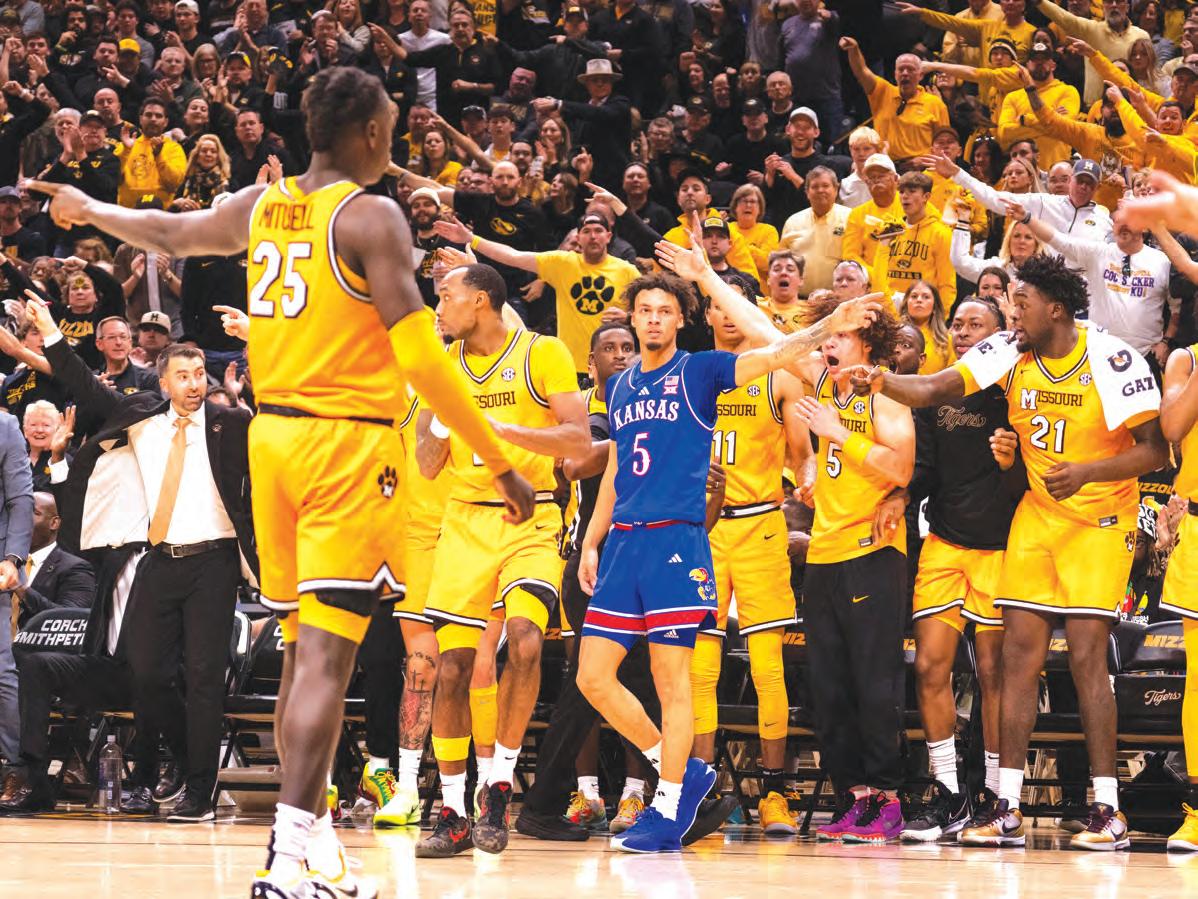
3 to break a 73-73 tie with a minute and a half remaining. Then Hunter Dickinson missed a pair of late opportunities inside, and Zeke Mayo settled for a wild potential game-tying shot from deep with the shot clock turned off, as KU did not make a field goal for the final 2:49.
Texas Tech went on to rout Colorado and Arizona State to conclude the regular season before escaping Baylor on the final possession in the
quarterfinals of the Big 12 tournament, then losing to Arizona — which had just beaten KU — in the semifinals. At Missouri on Dec. 8, the Jayhawks also needed to engineer a comeback, albeit from a vastly greater deficit, after they opened the game by committing 14 turnovers in the span of 16 minutes. They scored 15 straight in the second half and cut a 24-point deficit down to two, but gave up a late corner 3 to the Tigers’ Mark Mitchell
and ultimately fell 76-67. It was the second of backto-back road losses in early December that halted KU’s early-season momentum after it had opened the season No. 1 in the country, and it also went down as the Jayhawks’ first loss in the Border Showdown since Feb. 4, 2012, shortly before Missouri left the Big 12. The defeat looked a lot worse from a nonconference resume perspective at the time,
when the Tigers had only just snapped a streak of over a year without beating a power-conference opponent.
In fact, Missouri proved to be a much more formidable team in its third season under head coach Dennis Gates, as it went 10-8 in a cutthroat SEC with victories over the likes of Alabama (twice), Florida, Mississippi State and Ole Miss.
The Tigers are a No. 6 seed and will face No. 11 Drake on Thursday.















































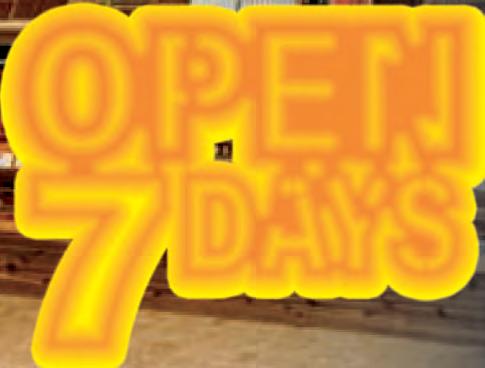


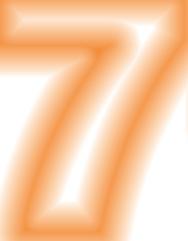
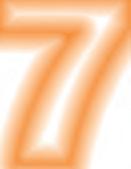


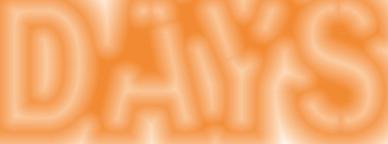




By Avery Hamel
The Kansas women’s basketball team rode out an injury-riddled 2024-25 season on the back of sophomore guard
S’Mya Nichols, featuring a supporting cast forced into much bigger roles than anyone had expected. KU concluded its year with a 16-14 record and did not appear in the WBIT or WNIT fields released late Sunday night, meaning it will presumably go without a postseason appearance for the first time in four years.
The Jayhawks began their season with starting guard Wyvette Mayberry, who was one of only two returning starters for this year’s team, out with a knee injury, forcing a starting lineup that featured four transfers. Mayberry returned in mid-November after missing the first three games of the year but wasn’t 100% healthy as she played the next six games and averaged only 5.2 points per game before missing Kansas’ final 21 games.
Creighton transfer and starting guard Brittany Harshaw briefly joined Mayberry on the end of the bench after Kansas’ first two games, in which she averaged 11.5 points and nine rebounds per game, due to a lower-body injury. Harshaw only missed a month of time with her injury, but fell out of the starting lineup upon her return and didn’t reach doubledigit scoring until six games into her comeback.
The Jayhawks lacked a true center after the graduation of Taiyanna Jackson following the 2023-24 season. This left most of the inside work to 6-foot-3 freshman Regan Williams, who started Kansas’ first 24 games at center before head coach Brandon Schneider decided to bring her off the bench for an extra spark for the last six games of the year.
Along with Williams, Nichols and Wisconsin transfer

Sania Copeland each had to play out of position at times, with Copeland deployed in all five spots. As Nichols became Kansas’ main ball handler, she continued as the Jayhawks’ top scorer, but found herself in a much different role in her second year at Kansas. Without shot creators Zakiyah Franklin and Holly Kersgieter by her side, Nichols had a much heavier weight to bear, with only one of her teammates, Elle Evans, averaging more than 10 points per game (13.3). Last year, Nichols averaged 15.4 points and had three teammates, Jackson (12.6), Franklin (11.8) and Kersgieter (11.6), average double-figure scoring across the season, with Mayberry scoring 9.7 points per game as the fifth starter. This year, Nichols scored 18.6 points per game as she and
Evans combined for 49% of Kansas’ points scored throughout the season.
Kansas came into the season with lower expectations than the previous three seasons, in which the Jayhawks had made it to the postseason. The Big 12 Conference preseason poll projected Kansas to finish eighth, which put the Jayhawks close to being in the mix to make it to March Madness again, as seven teams from the conference made it in 2024. Kansas had a lot of unknowns going into the year as a team now centered around a sophomore guard with a supporting cast that had never played together.
Kansas started off strong with a relatively weak nonconference schedule, winning its first five games — all at home — before losing to Iowa, 71-58, in a neutral site matchup in
Sioux Falls, South Dakota. In their November tournament, the U.S. Virgin Islands Paradise Jam, the Jayhawks turned some heads by beating three quality teams in Northern Iowa, Pittsburgh and Auburn to be crowned tournament champions. Kansas pulled this off without Harshaw and in Mayberry’s first games back, when her knee was still an issue.
The Jayhawks finished nonconference play with a 10-1 record and on a six-game winning streak after beating Penn State. But in its last game before the winter break, Kansas fell 86-66 to a good, and eventually second-place, Baylor in its conference opener. The slide continued as the Jayhawks traveled to Ames in another double-digit loss before they grabbed a surprise win to finish the road trip, knocking off Oklahoma State






75-66 in the Cowgirls’ only home loss of the season.
After losing a very close battle with eventual conference champion TCU 80-73, the Jayhawks rode peaks and valleys throughout the rest of conference play, usually coinciding with their home and road trips. Kansas grabbed a win at lastplace Houston in late January but lost four of its last five road games in conference play before finishing on a high note by beating a struggling BYU team in Provo, Utah. Williams recorded a career-high 20 points in the game while coming off the bench as Evans led the Jayhawks with 24 points and Nichols slotted into a peripheral role, recording seven assists and 14 points. But injuries caught up to Kansas in the last part of the season, as Evans went down with a quad injury after the BYU game and missed the regular-season finale, a 57-51 senior-day loss against Oklahoma State, and the Jayhawks’ sole Big 12 tournament game, a 57-53 loss against Texas Tech. In Kansas’ final game of the year against Tech, the Jayhawks had only two solid options coming off the bench, Williams and regular role player Carla Osma. Nichols went down with a leg injury late in the third quarter and didn’t return, having also struggled in her time on the floor, scoring only eight points in 28 minutes of play while committing eight turnovers. KU could bring back the vast majority of its contributors next season, as it had just two players go through senior-day festivities, and so far has lost just one known player to the transfer portal (Freddie Wallace, who did not play this season for medical reasons). The Jayhawks’ four-player recruiting class of Tatyonna Brown, Jaliya Davis, Libby Fandel and Keeley Parks includes three state Gatorade players of the year and at the time of their signing was ranked No. 6 by ESPN.
